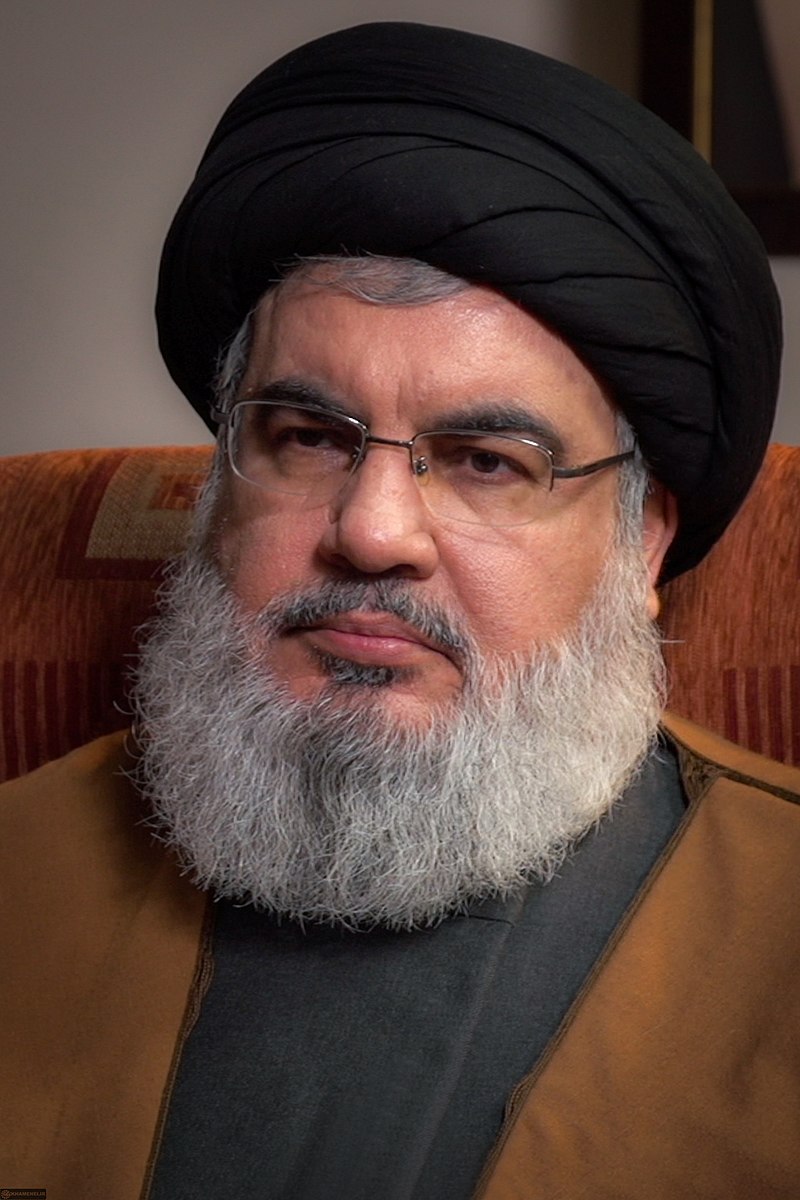With the game-changing death of its long-serving secretary general, Hassan Nasrallah, Hezbollah has been dealt a devastating blow in its long-running armed confrontation with Israel.
He was killed on September 27 after Israeli aircraft dropped bunker-busting bombs on Hezbollah’s central headquarters in Dahiya, a southern suburb of Beirut. Four to six high-rise residential buildings were flattened in the strike that shook the Lebanese capital.
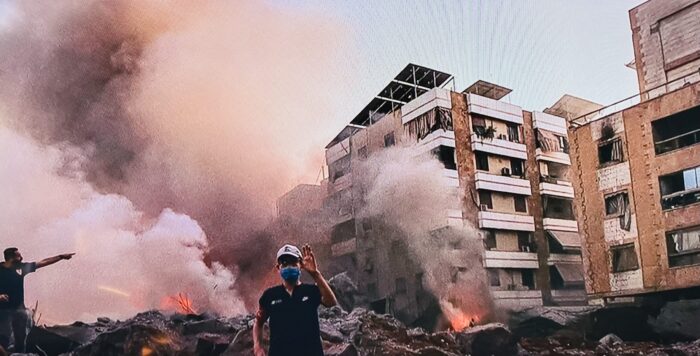
Nasrallah, a wily and charismatic figure who assumed his post following the Israeli assassination of his predecessor, Abbas Musawi, in the winter of 1992, built Hezbollah into a formidable military and political force in Lebanon. After Iran, Hezbollah was Israel’s deadliest enemy.
He was assassinated a day after the United States and France announced a still-born plan to broker a temporary ceasefire in Lebanon, several days after Prime Minister Benjamin Netanyahu said that Israel would continue striking Hezbollah with “all our might,” and just hours after he told the United Nations that Israel would continue “degrading Hezbollah until all our objectives are attained.”
As recently enunciated by General Herzi Halevi, the chief of staff of the Israeli armed forces, Israel’s goals are five-fold: to degrade Hezbollah military capabilities, to push Hezbollah forces in southern Lebanon to a line north of the Litani River in compliance with United Nations Security Council Resolution 1701, to deny Hezbollah weaponry from Iran, to wipe out Hezbollah’s leadership, and to facilitate the return of some 60,000 displaced Israelis to their homes close to the Lebanese border.
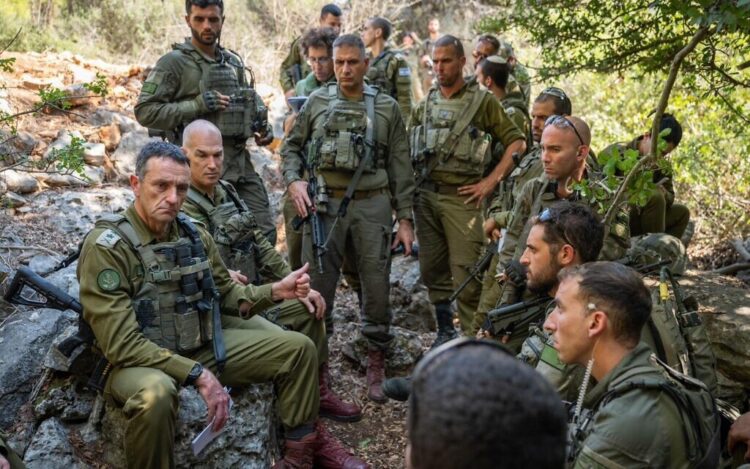
They were evacuated shortly after Hezbollah began firing rockets, missiles, mortars and drones at northern Israel on October 8 in solidarity with Hamas, which attacked Israel the day before in a massive invasion that claimed the lives of roughly 1,200 people and resulted in the kidnapping of 251 Israelis and foreign nationals. This invasion trigged the ongoing Israel-Hamas war in the Gaza Strip.
Apart from Nasrallah, the commander of Hezbollah’s front in southern Lebanon, Ali Karaki, who recently survived an Israeli assassination attempt, was killed in yesterday’s blast, a significant escalation in the grinding war of attrition between Israel and Hezbollah.
In a separate operation on September 28, Israel eliminated Muhammed Ismail, the commander of Hezbollah’s rocket and missile unit in southern Lebanon, along with his deputy, Hussein Ismail.
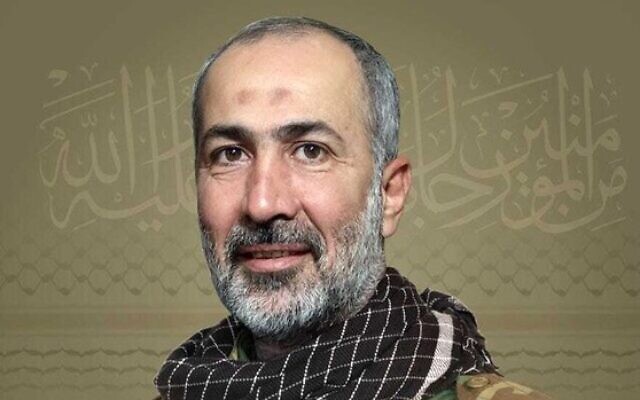
On September 26, Israel killed Mohammed Hussein Srour, who was in charge of Hezbollah’s drone manufacturing facilities in southern Lebanon. Prior to these hits, Israel killed Ibrahim Iqil, the commander of the Radwan Force, whose task is to invade northern Israel.
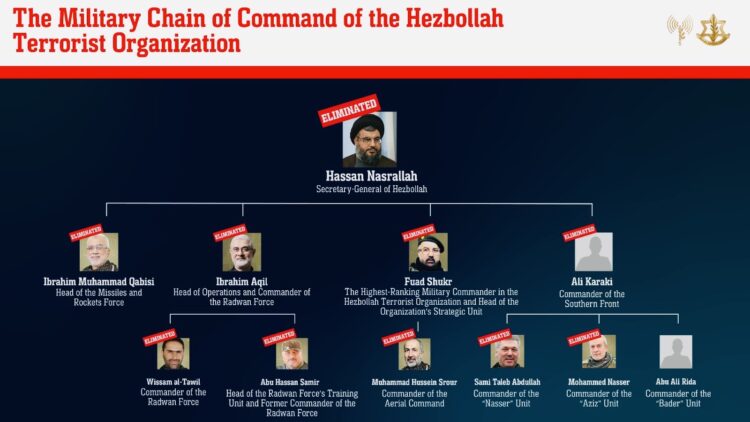
Aside from these attacks, Israel has bombed Hezbollah bases throughout Lebanon, including the Bekaa Valley. On September 8, in a remarkably daring raid, Israeli commandos destroyed a Hezbollah facility in Masyaf, Syria, designed to manufacture high-precision missiles.
Yesterday, in another important development, Iran Air, the Iranian flag carrier, suspended all flights to Beirut after the commander of the Israeli Air Force, General Tomer Bar, said that the prevention of arms transfers from Iran to Hezbollah was now a top priority. The logic behind his comment is clear. Hezbollah’s attempts to recover from its losses is directly dependent on its ability to rearm.
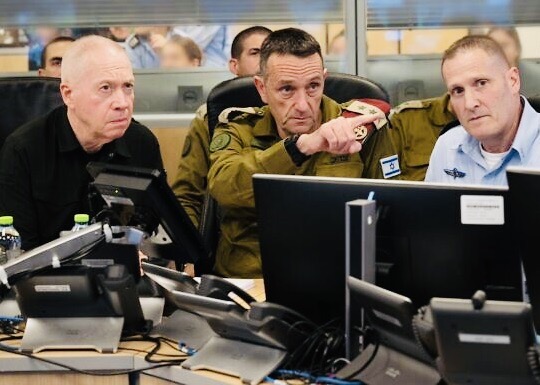
In recent days, Israel has noticed Iranian efforts to resupply Hezbollah, its chief proxy in the region, with fresh batches of weapons and munitions.
Since last week, the Israeli Air Force has struck seven border crossings between Lebanon and Syria to block the movement of weapons to Hezbollah.
Hezbollah has been weakened by Israel’s offensive, but it is far from broken.
On September 28, Hezbollah pummelled Israel with a series of rocket and missile attacks, which caused no reported injuries.
Ten rockets were fired at the Upper Galilee, some of which were intercepted by the Iron Dome air defence system. A long-range rocket set off sirens in several West Bank settlements, including Beit El and Ofra. Later in the day, five rockets were launched toward the Galilee, the Jezreel Valley, several towns east of Haifa and Wadi Ara. Thirteen more rockets were fired at the area around Safad.
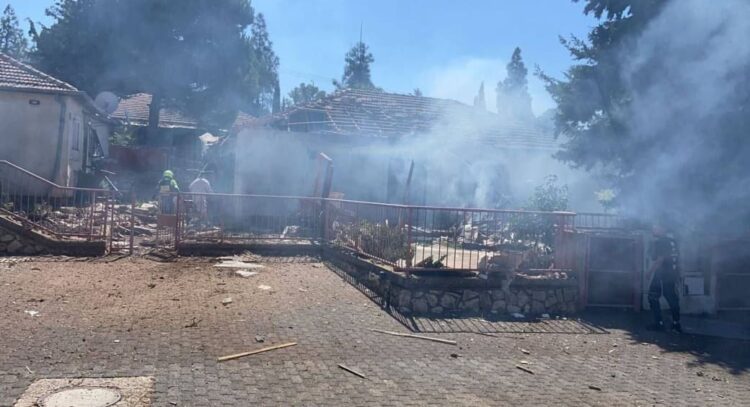
And two surface-to-surface missiles aimed at Tel Aviv landed in the sea off its coastline, while a second projectile was downed over northern Israel.
On September 25, Israel shot down a missile heading toward the headquarters of the Mossad outside Tel Aviv. It marked the first time that Hezbollah had fired a missile toward Tel Aviv.
With Nasrallah’s demise, it is debatable whether Israel will make good on its threat to invade southern Lebanon, the heartland of Hezbollah’s base.
Since last December, Israel has pursued the path of diplomacy to dislodge Hezbollah from this border regions, but these efforts have all fallen short. Israeli leaders have warned that if diplomacy fails, they will resort to military means if necessary to compel Hezbollah to comply with Resolution 1701.
On September 25, Halevi alluded to this option when he told Israeli troops that an Israeli incursion into Lebanon appeared imminent.
“You hear the jets overhead,” he said in a reference to Israeli Air Force raids in Lebanon. “Wee have been striking all day. This is both to prepare the ground for your possible entry and to continue degrading Hezbollah … Prepare yourselves … The goal is very clear — to safely return the residents of the north.”
He added that the Israeli army might soon “enter enemy territory, enter villages that Hezbollah has prepared as large military outposts …You go in, destroy the enemy there and decisively destroy their infrastructure.”
In closing, Halevi said that Israel has been “waiting for this opportunity for years,” and that the Israeli armed forces oppose a ceasefire at this juncture.
General Ori Gordin, the head of the Northern Command, told soldiers recently that Israel needs to be “strongly prepared” for a ground offensive in Lebanon. As he put it on September 24, “We have entered another phase of the campaign …We need to be very strongly prepared to enter in a (ground) maneuver.”
He made these comments after Israel called up two reserve brigades to be deployed along the northern border.
According to the Institute for the Study of War, Iran, Hezbollah, and the rest of the Axis of Resistance appear to be preparing for an Israeli thrust into Lebanon.
“The Israel Defence Forces have observed around 40,000 Iranian-backed Iraqi, Syrian, and Houthi militants concentrate around the Syrian border with the Golan Heights. It is unclear why and when the Axis of Resistance deployed these militants or whether they were already in the area. It is also unclear whether Hezbollah is able or willing to integrate these foreign fighters into its already well-organized and trained force structure.”
Of late, the Axis of Resistance has been conducting attacks against Israel to draw Israeli resources away from its campaign against Hezbollah.
The Islamic Resistance in Iraq has launched missiles and drones at Israel, while the Houthis in Yemen have fired a ballistic missile at Tel Aviv and a drone at Ashkelon.
It looks like a regional war in brewing.
